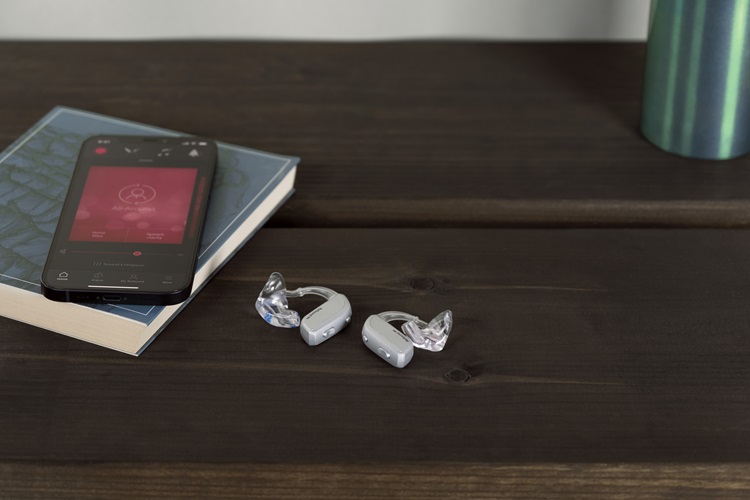Brand new audio sharing technology, Auracast™, could transform the way hearing aid and cochlear implant users listen to audio.

RNID is really excited about the announcement of Auracast™ today, a brand new assistive listening system.
Auracast™ has been designed specifically for people with hearing loss, to stream audio to devices such as hearing aids and cochlear implants. This will make audio in public places and on personal devices, like smartphones, much more accessible. For instance, you will be able to use your smartphone to listen to public announcements in busy stations or airports, or to share music with friends.
Since Bluetooth’s announcement of this new technology in early 2020, RNID has been excited about the new audio sharing technology and the benefits it might bring to our community.
We’ve been working with the Bluetooth Special Interest Group (SIG), the trade association for Bluetooth® technology, to ensure the new technology is easy to use, safe and that the rollout is as smooth as possible.
We expect new Auracast™ products, including hearing aids and cochlear implants, to start coming into the market in early 2023.
RNID will continue to work with Bluetooth SIG and with our supporters to encourage venues and product developers to adopt Auracast and make the transition from existing systems, as it has the potential to make a significant difference to the lives of people with hearing loss.
Auracast™ could transform the everyday lives of people with hearing loss and make the world much more inclusive. RNID really wants to encourage this kind of inclusive technology, and we were thrilled to be able to contribute to its development and rollout.
Gideon Hoffman, RNID trustee
While traditional systems like loop systems are useful, this new technology will be in devices everyone uses, which makes it inclusive and easy to access music, video and conversations with friends and family.”
About Auracast™
How assistive listening systems work
Assistive listening systems can be used to help people who struggle to hear audio in difficult environments. This can include hearing speech in noisy places, music, dialogue on television and the telephone. There are different technologies that can help do this such as loop systems. Auracast is the newest one.
Existing Bluetooth streaming
For hearing aid and cochlear implant users, streaming audio using Bluetooth from personal devices like smartphones has been available for some time. However, currently, it only allows you to connect to a single device at a time and sometimes only works with specific devices. Read more about assistive listening systems.
How Auracast is different
1. Access to audio for everyone
Anyone with Auracast ™ enabled Bluetooth earbuds or hearing aids will be able to access high quality audio, through the privacy of their own device. This might be public announcements like when you are at an airport or train station or a private conversation, such as talking to someone at your bank.
2. Share the experience with others
The new Auracast™ will be the first truly universal Bluetooth connection. You will be able to stream audio from any Auracast™ capable device to your Auracast ™ enabled Bluetooth earbuds or hearing aids. This means you can all listen to the same music from one phone together.
When Auracast ™ will be released
The Bluetooth SIG are currently finalising the specifications that product developers and venues will have to meet in order to use Auracast™. This is expected to be released in the next few months with new Auracast™ products including hearing aids and cochlear implants to then start coming into the market in early 2023.
It will take a long time to move from existing systems to new technology. It is therefore important that existing technology like loop systems continue to be used to provide vital communication support for those who need it.
Find out more about assistive listening systems.